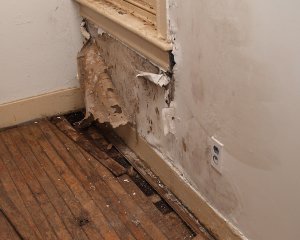Pinpoint Six of Commonest Leak Triggers Within The Home
Pinpoint Six of Commonest Leak Triggers Within The Home
Blog Article
Are you trying to find guidance on Top Causes of Home Water Leaks?

Leakages not only create waste of water yet can also trigger unnecessary damage to your residence and advertise undesirable organic development. By looking and recognizing for daily situations that create leaks, you can shield your home from future leaks as well as unnecessary damage.
Trespassing origins
Most water leakages start outside the home rather than inside it. You may notice wet patches or sinkholes in your lawn, and also that might suggest that tree roots are getting into water lines creating water to permeate out.
Rusty water supply
As time passes by, your plumbing system ages as well as rust such as rust may start eating away the pipes. This may be the cause of discoloration or warping on your pipes. This requires an inspection with your plumber right away. If our plumbing system is old, take into consideration changing the pipes because they are at a greater danger of rust than the newer versions.
Defective Pipe Joints
Pipe joints can weaken over time, resulting in water leakages. If you have noisy pipelines that make ticking or banging sounds, specifically when the hot water is transformed on, your pipe joints are most likely under a whole lot of pressure.
Instantaneous temperature level adjustments.
Extreme temperature level adjustments in our pipes can trigger them to expand and contract unexpectedly. This development and contraction may create splits in the pipelines, particularly if the temperature are listed below cold.
Poor Water Connectors
At times, a leak can be caused by loosened pipes and also pipelines that provide your home appliances. In situation of a water connections leakage, you may notice water running directly from the supply line or puddles around your devices.
Blocked Drains
Blocked drains pipes might be irritating and inconveniencing, but they can sometimes end up triggering an overflow resulting in break pipes. Keep getting rid of any type of materials that may go down your drains that can clog them to stay clear of such hassles.
All the above are causes of leakages but not all water leaks result from plumbing leaks; some leaks could come from roofing leaks. All leaks should be fixed quickly to stay clear of water damage.
Leakages not just cause waste of water yet can likewise cause unneeded damage to your residence as well as advertise undesirable organic development. By looking and also recognizing for everyday situations that trigger leakages, you can shield your residence from future leaks as well as unneeded damages. Today, we will certainly look at 6 leakage causes that might be triggering your pipelines to leak.
At times, a leakage can be created by loosened hose pipes and pipes that supply your devices. In situation of a water connections leakage, you might observe water running directly from the supply line or pools around your home appliances.
How To Check For Water Leak In Your Home
How To Check for Leaks
The average household's leaks can account for nearly 10,000 gallons of water wasted every year and ten percent of homes have leaks that waste 90 gallons or more per day. Common types of leaks found in the home are worn toilet flappers, dripping faucets, and other leaking valves. These types of leaks are often easy to fix, requiring only a few tools and hardware that can pay for themselves in water savings. Fixing easily corrected household water leaks can save homeowners about 10 percent on their water bills.
To check for leaks in your home, you first need to determine whether you're wasting water and then identify the source of the leak. Here are some tips for finding leaks:
Take a look at your water usage during a colder month, such as January or February. If a family of four exceeds 12,000 gallons per month, there are serious leaks.
Check your water meter before and after a two-hour period when no water is being used. If the meter changes at all, you probably have a leak.
Identify toilet leaks by placing a drop of food coloring in the toilet tank. If any color shows up in the bowl after 10 minutes, you have a leak. (Be sure to flush immediately after the experiment to avoid staining the tank.)
Examine faucet gaskets and pipe fittings for any water on the outside of the pipe to check for surface leaks.
Undetected water leaks can happen without the home or business owner even realizing. If you suspect a water leak, but not able to find the source. It is time to contact a professional water leak detection service, The Leak Doctor.
How To Find a Water Leak In Your Home
https://www.leakdoctor.com/blog/How-To-Check-For-Water-Leak-In-Your-Home_AE197.html

I discovered that content on How to detect water leaks in your home while doing a lookup on the search engines. Sharing is caring. Helping people is fun. I praise you for your time. Please visit our blog back soon.
Emergency plumber? One call away. Report this page